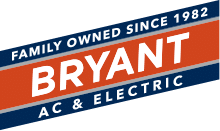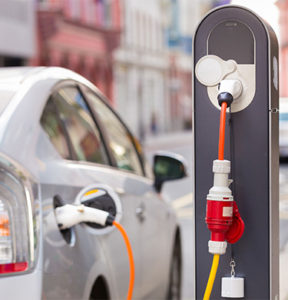Types of EV/Electric Car Charging Stations
We recommend getting a 50-amp charging station when buying an EVSE. The charge times are faster and will help extend the range of your electric car or vehicle. This also helps future proof your EVSE when you get an electric car that charges faster than today’s models. However, there are different types of chargers you can use depending on what you need.
Level 1 Charging Station
Level 1 chargers are better known as “wall sockets,” (i.e. plugs in your own home) Technically, you can plug your car in at your home to recharge your vehicle. 1 hour of charge via Level 1 charging results in roughly 4.5 miles of drive time. To get a full charge, it would take around 22 hours of charging.
This is only recommended if you are doing local driving, as local driving could take as long as 9 hours just to hop around town.
Level 2 Charging Station
Level 2 chargers function via a 240V wall plug-in, similar to what your washer or dryer may run on. Once plugged into your car, level 2 chargers can supply up to 70 miles per hour of charging.
When needing to charge their vehicle, many owners of level 2 chargers unplug their dryer and plug in their charging station. It is strongly recommended to get a dedicated wall socket for your level 2 charging station. A dedicated socket minimizes alternating flows of electricity running through a single source, which lessens problems in your home.
While level 2 chargers are a bit pricier, several programs can help offset those initial purchase costs, including a possible 30% federal tax credit of up to $1,000 to help with installation. This can help you charge your electric cars faster in your own Austin home.
DC Fast Chargers
Also known as a Level 3 charger, DC fast chargers bypass an electric car’s onboard charger and get AC power to the battery through a special charging port.
Many DC fast chargers deliver an average maximum output of 50 kW. Instead of charging for 8 hours, a DC fast charger may take as little as 30 minutes.
At this moment, there is no one universal model of DC fast chargers.
The primary models of DC fast chargers are:
CHAdeMO Charging Stations
CHAdeMO is a brand of charging method introduced by a combination of Japanese companies made up of Nissan, Mitsubishi, Toyota, and others. CHAdeMO chargers are easily the most widely used in the United States as of 2016 and can provide up to 62.5 kW to an electric car or vehicle.
SAE Combo Charging System
Based off of Level 1 and 2 chargers, the SAE combo charging system (CCS) is the preferred charging solution for many U.S. and German car companies, such as BMW, General Motors, Ford, Volkswagen, and more. SAE Combo chargers are not as commonplace as CHAdeMO and offer a charge of no more than 50 kW.
Tesla Supercharging
This DC fast charger stands in a category all its own. The Tesla Supercharger outputs a maximum of 145 kW for each plug-in. This lets any Tesla charge up to 16 times faster than any other DC fast charger. The only caveat is that only other Tesla cars can use the Tesla Supercharger.
When a car battery is close to 0%, electricity will get into your car faster than getting a car’s charge from 99% to 100%. As the car “fills up” with electricity, the flow slows down, starting at around 50% of the charge. The flow almost crawls to a stop above 80%, which is why many public charging stations cut off electric cars at this point. Don’t worry; you just have to leave your car in your home charger a bit longer.


